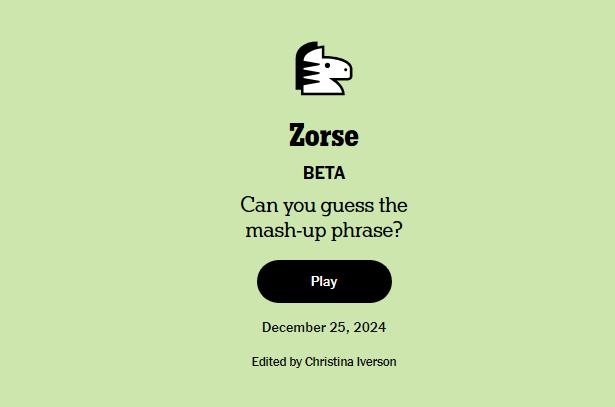The New York Times’ foray into the world of online gaming has proven remarkably successful, transforming the venerable newspaper into a prominent player in the digital entertainment sphere. The acquisition of Wordle in 2022 served as a catalyst, propelling the Times Games app to unprecedented heights, achieving a staggering 10 million downloads in 2023. This surge in popularity has fueled a significant expansion of the Games department, which has grown from a modest team of around a dozen to over 100 employees in the past decade. This investment underscores the Times’ commitment to cultivating a robust and engaging gaming platform, recognizing the potential for substantial growth and diversification of revenue streams. The introduction of a dedicated Games subscription, priced at $6 per month (with attractive introductory offers available), further solidifies the newspaper’s strategy to cater to a growing audience of online game enthusiasts. The success of existing games like Wordle, with over 4.8 billion plays, and Spelling Bee, with over 120 million Genius level achievements, lays a strong foundation for the introduction of new and innovative game titles.
The latest addition to the NYT Games portfolio is Zorse, a word puzzle game that takes its name from the zebra-horse hybrid, hinting at the game’s core mechanic of blending two distinct phrases into a single, cohesive expression. This phrasal portmanteau game presents players with a series of blank words, each containing a single revealed letter, accompanied by a clue that provides context for the combined phrase. The gameplay incorporates elements reminiscent of Wheel of Fortune, allowing players to “reveal” up to five additional letters before relying on their deductive skills to fill in the remaining blanks and guess the final phrase. This blend of word association, pattern recognition, and strategic letter reveals creates a unique and engaging gameplay experience that challenges players to decipher hidden meanings and connect disparate concepts.
The gameplay of Zorse unfolds through a series of interactive steps. Initially, players are presented with a clue that hints at the underlying theme or subject of the combined phrase. This clue serves as a starting point, prompting players to begin formulating potential word combinations that fit the given context. Alongside the clue, a series of partially obscured words are displayed, each containing a single revealed letter. These initial letters act as anchors, guiding players towards the correct solution. Players then have the option to strategically reveal up to five additional letters, using these reveals judiciously to gain valuable insights into the structure and composition of the hidden phrase. This mechanic adds an element of strategy, requiring players to balance the desire for more information with the risk of depleting their limited reveals too early in the game.
Once the five reveals are exhausted, players must rely on their word knowledge and deductive reasoning to complete the remaining blanks and ultimately guess the combined phrase. This final stage of the game tests players’ ability to synthesize the revealed letters, the initial clue, and their understanding of common phrases and expressions. The satisfaction of correctly deciphering the hidden phrase provides a sense of accomplishment, rewarding players for their linguistic dexterity and problem-solving skills. However, the current implementation of five reveals raises questions about the game’s difficulty level. While providing ample assistance to players, the abundance of reveals may inadvertently simplify the puzzle, potentially diminishing the challenge and the sense of achievement upon completion.
A practical example illustrates the Zorse gameplay experience. In a recent game, the clue presented was “Christmas song with lots of extra features.” The initial setup revealed a single “H,” providing a minimal starting point for players to work with. Utilizing the reveal function, additional letters were unveiled, gradually revealing the structure of the hidden phrase. With the help of these reveals, the blanks were filled, and the correct answer, “Carol of the Bells and whistles,” was successfully guessed. This example demonstrates the interplay between the clue, the revealed letters, and the player’s deductive reasoning, showcasing the core mechanics of Zorse in action. The combination of the familiar Christmas carol “Carol of the Bells” with the idiomatic phrase “bells and whistles” exemplifies the game’s focus on merging two distinct phrases into a single, cleverly crafted expression.
While Zorse currently enjoys a limited release, being accessible primarily in Canada (or through the use of a VPN), the anticipation for a wider beta release and eventual integration into the NYT Games app is palpable. Joining the ranks of Wordle, Connections, Strands, the Crossword, Spelling Bee, and other established titles, Zorse has the potential to become a popular addition to the Times’ burgeoning gaming platform. The company’s stated intention to gather player feedback and observe user engagement patterns during the beta phase underscores their commitment to refining and optimizing the game based on real-world player experiences. This iterative approach to game development ensures that Zorse reaches its full potential, delivering a polished and engaging gaming experience to a global audience. The future of Zorse, and its contribution to the continued success of the NYT Games platform, remains a topic of keen interest and anticipation.
The success of Zorse will depend on its ability to carve out a unique identity within the increasingly crowded landscape of online word games. While the core mechanic of combining phrases offers a novel twist, the game’s long-term appeal will hinge on its ability to consistently deliver fresh and engaging puzzles that challenge players’ vocabularies and problem-solving skills. The New York Times’ commitment to quality and innovation in its gaming offerings suggests that Zorse will likely receive ongoing development and refinement, ensuring that it remains a compelling option for word game enthusiasts. The careful balancing of difficulty, the introduction of new features, and the integration of player feedback will be crucial factors in shaping the game’s evolution and solidifying its position within the NYT Games ecosystem.



